A trip to Japan and South Korea is something that has long filled the dreams of travelers eager to explore rich cultures, stunning landscapes, and unique cuisine. After our second trip to Japan in April 2023, we decided to extend our adventure to South Korea. We opted for an independent approach, booking everything on our own and building a personalized itinerary based on our interests. You can find more information on how to plan a trip to Japan here. In this post, we share our 3-week journey to Japan and South Korea, filled with memorable moments, surprising discoveries, and unforgettable experiences that shaped our view of these two fascinating countries.
Unlock exclusive travel tips and updates!
Subscribe to our newsletter and receive a FREE PACKING LIST
Itinerary
Week 1: Tokyo and Hakone
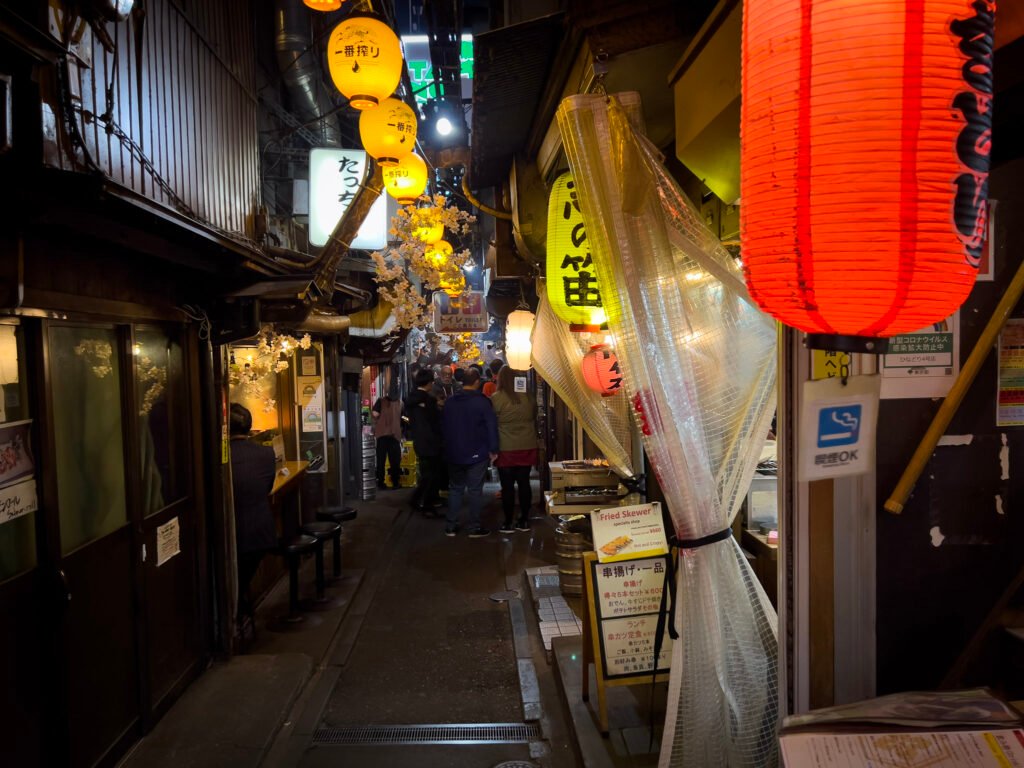
Tokyo (4 nights): No trip to Japan is complete without visiting Tokyo. We immersed ourselves in the bustle of Tokyo, exploring everything from the iconic Shibuya crossing, and the Tsukiji Market to the spectacular district of Asakusa. We indulged in the wonders of Japanese cuisine and marvelled at the vibrant neighbourhoods that define the city’s dynamic landscape. Tokyo is a city that never seems to end for those who visit. We’ve been to Tokyo 3 times already, and there’s always something more to see or do.
Where to stay in Tokyo
Shinjuku (nightlife), Shibuya (youth culture), Ginza (luxury shopping), Asakusa (historic sites), Ueno (budget-friendly), Ikebukuro (shopping), Roppongi (nightlife), Harajuku (fashion).
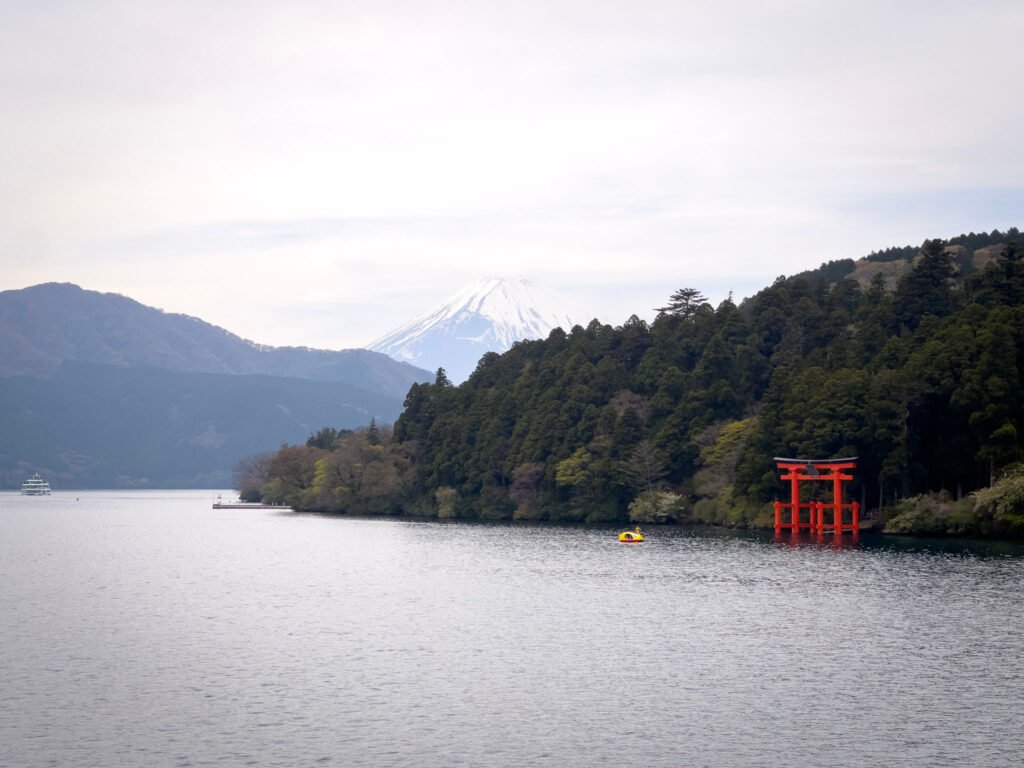
Hakone (1 night): A train journey took us to Odawara where we activated the Hakone FreePass and caught another train to Hakone. In Hakone, you can enjoy views of Mount Fuji, visit an old teahouse, and take a walk along one of Japan’s oldest and best-known paths. The Hakone FreePass gives you access not only to the train but also to the bus within Hakone, cable cars, and a boat cruise on the lake.
Where to stay in Hakone
Hakone-Yumoto (hot springs), Gora (onsen resorts, Hakone Open-Air Museum), Lake Ashi (scenic views, boat cruises), Hakone Shrine (cultural heritage, picturesque setting), Owakudani (volcanic valley, black eggs), Hakone-machi (traditional townscape, historic sites), Mishima Skywalk area (panoramic views, suspension bridge), Sengokuhara (nature walks, art museums).
Week 2: Kyoto, Nara, and Fukuoka

Kyoto (4 nights): We fell in love with Kyoto’s historic temples and the charming Bamboo Forest of Arashiyama, creating magical memories in the heart of Japan. A day trip to Nara where we had the opportunity to mingle with and feed the deer added a special touch to our trip.
Where to stay in Kyoto
Gion (traditional geisha district, historic streets), Arashiyama (bamboo forest, scenic river, temples), Higashiyama (historic district, Kiyomizu-dera Temple, Ninenzaka and Sannenzaka streets), Fushimi Inari (Fushimi Inari Shrine, thousands of torii gates), Nishiki Market (traditional food market), Kyoto Station (modern transportation hub, Kyoto Tower), Kinkaku-ji (Golden Pavilion), Nijo Castle (historic castle, beautiful gardens).
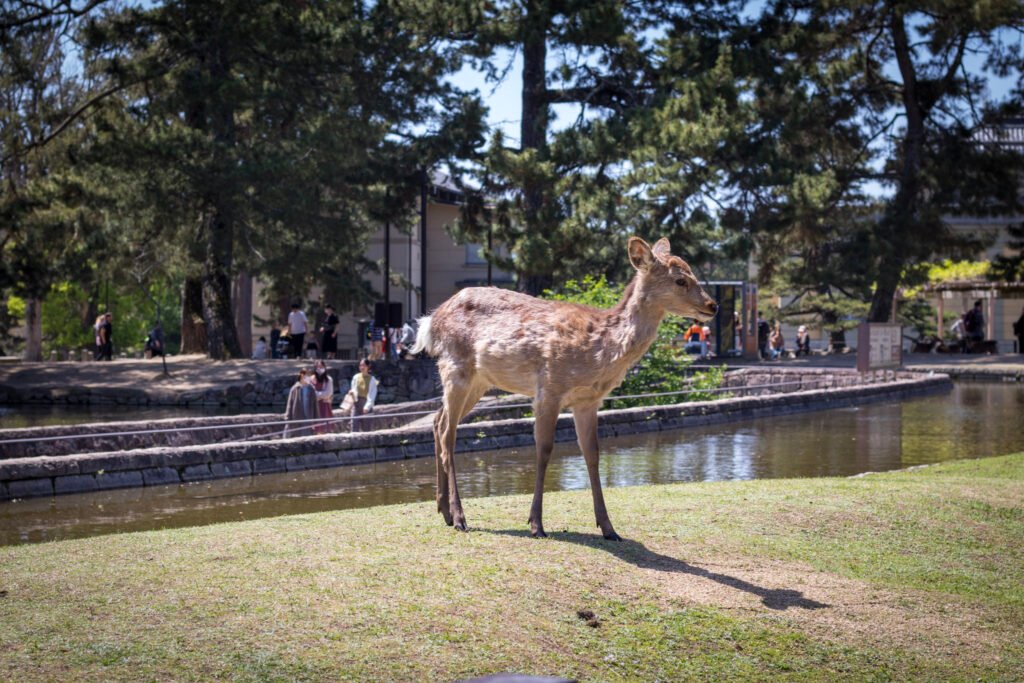
Fukuoka (2 nights): The high-speed train took us to Fukuoka, a city that combines tradition and modernity. We explored street food markets and relaxed in the serene Ohori Park.
Where to stay in Fukuoka
Hakata (historic district, food stalls, Kushida Shrine), Tenjin (shopping district, nightlife, entertainment), Canal City Hakata (shopping mall, dining, entertainment complex), Ohori Park (scenic park, Japanese garden, boating), Nakasu (nightlife, yatai stalls, riverside dining), Fukuoka Tower (observation deck, city views), Fukuoka Castle Ruins (historic site, park), Dazaifu Tenmangu Shrine (historic shrine, plum garden).
Week 3: Busan, Jeonju, and Seoul
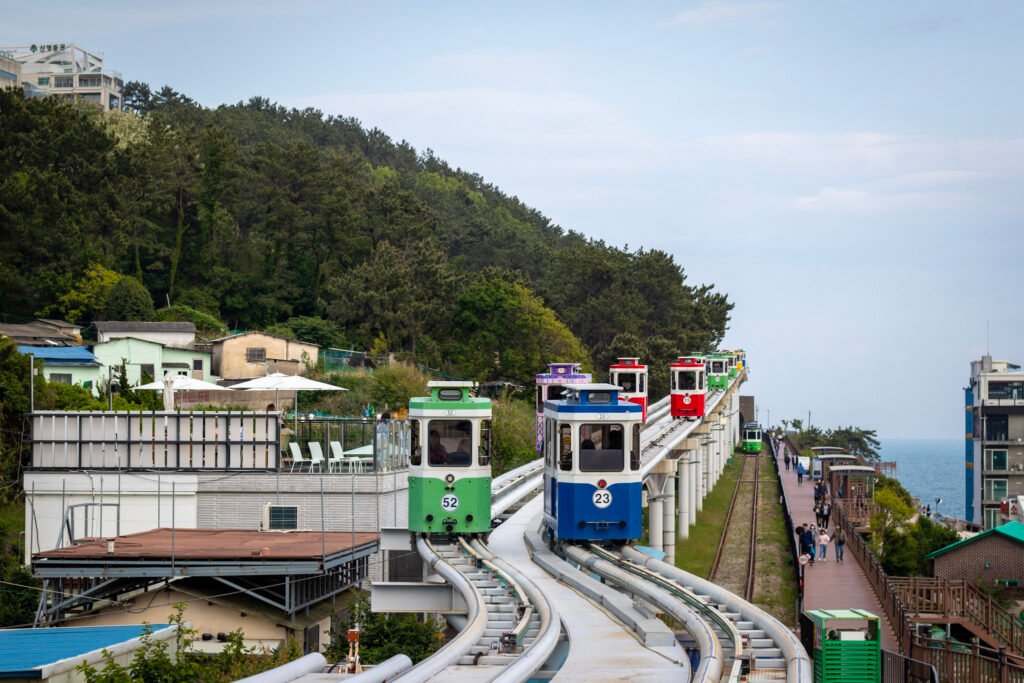
Ferry to Busan (4 nights): We boarded a scenic ferry that took us to Busan’s vibrant markets, serene beaches, and rich Korean cultural tapestry, highlighting the interculturality of our trip. It was the first place where we tried Korean barbecue in a very typical setting and we fell in love.
Where to stay in Busan
Haeundae (beach, nightlife, cafes), Gwangalli Beach (scenic beach, cafes, bridge views), Seomyeon (shopping district, nightlife, entertainment), Gamcheon Culture Village (colourful houses, art galleries, cultural village), Jagalchi Market (largest fish market in Korea, seafood stalls), Busan Tower (observation deck, city views, light shows), Beomeosa Temple (Buddhist temple, mountain hiking), Taejongdae Park (coastal park, cliffs, lighthouse).
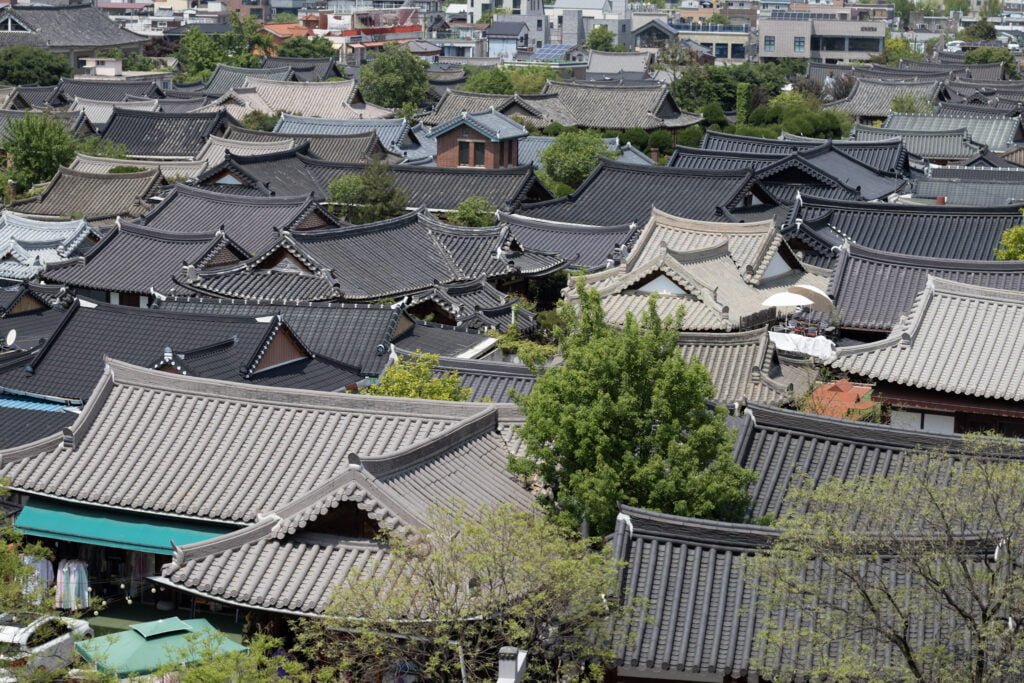
Jeonju (2 nights): Known for its Hanok Village and delicious bibimbap, Jeonju charmed us with its history and gastronomy.
Where to stay in Jeonju
Hanok Village (traditional Korean houses, cultural heritage, craft shops), Jeonju Nambu Market (traditional market, street food, local produce), Gyeonggijeon Shrine (historic site, Confucian shrine), Omokdae and Imokdae (scenic overlooks, historic sites), Jeonju Hanji Museum (papermaking museum, cultural exhibits), Pungnammun Gate (historic gate, city landmark), Jeonju Hyanggyo (Confucian educational institution, cultural site), Jaman Mural Village (art village, murals, photo spots).
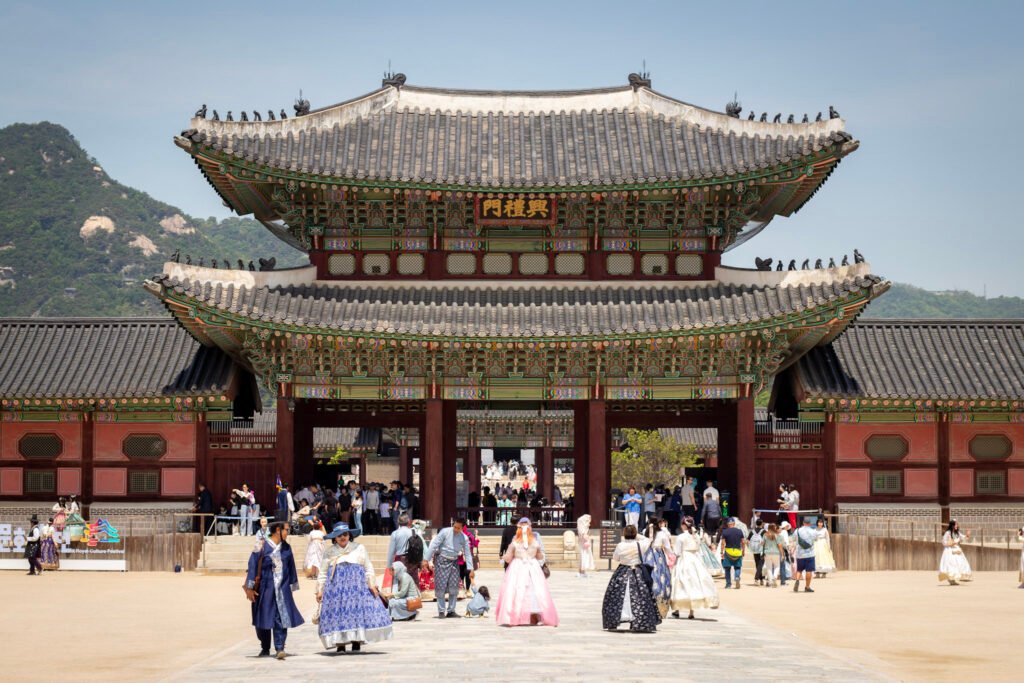
Seoul (4 nights): In Seoul, we explored ancient palaces, and dynamic neighbourhoods like Insadong, and indulged in vibrant street food.
Where to stay in Seoul
Myeong-dong (shopping district, street food, nightlife), Hongdae (youth culture, indie music scene, street art), Gangnam (upscale shopping, entertainment, nightlife), Insadong (traditional culture, tea houses, art galleries), Itaewon (international district, diverse cuisine, nightlife), Bukchon Hanok Village (traditional Korean houses, cultural heritage), Dongdaemun (shopping district, markets, late-night shopping), Namsan (N Seoul Tower, panoramic views, hiking trails).
Additional tips for a trip to Japan and South Korea
- JR Rail Pass: We used the JR Rail Pass to travel between cities in Japan, ensuring a smooth and cost-effective experience. Pass prices have recently changed, so before you decide to buy a pass, check if the planned trips are worth it.
- Hakone Pass: The Hakone FreePass was essential for exploring the region, offering access to exclusive attractions and stunning views.
- Activities: Both Japan and South Korea receive many travellers, so some attractions access tickets may sold out, make sure to book in advance online for Japan and South Korea.
- Ferry to South Korea: We recommend the ferry from Fukuoka to Busan for a scenic and unique experience. We used the Queen Beetle.
- Travel Insurance: When travelling independently to a remote destination, we always recommend travel insurance. Check out more details and information on travel insurance here.
- Train Travel: High-speed trains are efficient and fast, allowing you to explore multiple cities in a short amount of time.
- Food Safety: Try all the street food; it’s hygienic and safe, and offers unique experiences.
How much does a trip to Japan and South Korea cost?
A 3-week adventure trip to Japan and South Korea can cost from €3,500 per person in a group of 2, depending on choices of flights, accommodation, meals, and activities. We recommend early bookings, especially during peak seasons.
Best times to visit
The best times to visit are in the spring (April and May) and autumn (September to October) when temperatures are mild and the landscapes stunning. Summer (June to August) offers vibrant festivals, while winter (November to March) brings a unique atmosphere with holidays and special activities.
Entry requirements for Japan and South Korea
Entry rules in all countries depend on the traveller’s country of origin and passport nationality. We always advise checking information with consulate authorities or embassies.
Many countries, including Portugal, the United States, Canada, the United Kingdom, and Australia, grant visa exemptions for stays of up to 90 days for your trip to Japan.
For South Korea, visa requirements also vary depending on the country of origin, and a K-ETA may be required.
Our trip to Japan and South Korea was an enriching and unforgettable experience. We discovered the true essence of these countries, immersing ourselves in local culture, exploring stunning landscapes, and savouring unique cuisine. We hope our itinerary inspires your adventure and that you make the most of every moment, just as we did.
Planning your trip to Japan?
- Find your travel insurance with Heymondo (get 5% off)
- Find your accommodation with Booking
- Find activities with GetYourGuide
- Find your eSIM with MobiMatter, use the code TWOBYTHEWORLD to get up to 50% cashback
- Find outdoor activities with Manawa
- Rent your car with Discovercars
- Book your flight with Skyscanner
If you are planning a trip, check our resources page.
Activities at Japan
This post contains affiliate links that help support this project so we can create better content for you for free. By using our affiliate links, the resources we work with channel a small portion of the commission to support this project at no extra cost to you.
Legal disclaimer: All information on this blog is for informational purposes only. Readers should use the content with caution and verify its accuracy before making financial or travel decisions. This blog is not liable for any consequences arising from the use of the provided information.
